A Guide to Quality Compost Tea and Why You Should Use It
It’s time for tea, and we’re not talking about chamomile.
Compost tea is a healthy drink for your plants or lawn. It can be a great way to spruce up any parts of your yard that are looking a 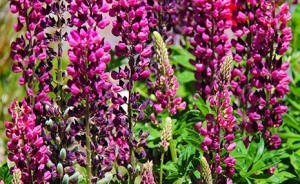 little sad. In this guide, we reveal some of our expert compost tea tips that will make your garden healthy and your neighbors jealous.
little sad. In this guide, we reveal some of our expert compost tea tips that will make your garden healthy and your neighbors jealous.
Arborists know that adding compost to soil can increase the minerals and nutrients available to your plants. This is like plant food – it helps your plants grow big and strong. Compost also contains bacteria and fungi that help protect plants from disease and infection.
But compost can be arduous to spread. Sometimes what seems like a large amount can be surprisingly little – not enough to give your plants the nutrients they need.
That’s where ‘compost tea’ comes into the mix.
Making compost tea is simple. The process is very similar to making actual tea. You can spread it over large areas, covering plants with microorganisms that fight the spread of plant diseases and improve the health of your plants.
What is ‘Compost Tea’?
“Compost tea is a liquid extract of compost that contains plant growth compounds and beneficial microorganisms.”
Agriculturists have used liquid extracts and fertilizers for hundreds of years. Solid compost is a great source of beneficial nutrients, but you can only mix it with the soil. This forces the plant to create its own ‘protective barrier’ of microorganisms on its foliage.
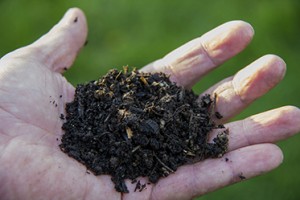 Compost is also difficult to spread over large areas. For the homeowner wanting to fertilize their lawn or trees, it isn’t always the best choice.
Compost is also difficult to spread over large areas. For the homeowner wanting to fertilize their lawn or trees, it isn’t always the best choice.
Compost tea is the solution to these problems. It allows agriculturists to take the best parts from compost and put them in liquid form. You can easily spray that liquid over an entire plant or lawn.
Generally speaking, there are two types of compost tea: aerated and non-aerated. While we want you to become a compost tea expert, we’re going to take baby steps.
Making aerated compost tea gets complicated (and expensive). For the sake of learning, this post will focus on the simplest method of making compost tea.
Making Farmer’s Tea (Non-aerated Compost Tea)
The process of making Farmer’s Tea resembles that of brewing actual tea. Like the name implies, you make non-aerated compost tea by ‘steeping’ or soaking compost in water.
While your compost is soaking, you’ll need to stir and agitate it by hand. This introduces air into the mixture, allowing colonies of good bacteria, fungi, and yeast to grow in the liquid.
Once the water is saturated with beneficial nutrients and fermented with microorganisms, you want to strain it into a spraying device and apply it to your plants.
That’s an overview of the whole process – start to finish. Now we’ll cover each step in more detail.
Materials Needed
You can pick up all these materials at your local nursery or garden shop.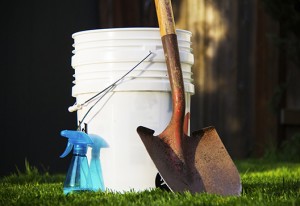
- Two 5 gallon buckets
- Water source (not chlorinated) *
- Ready-to-use compost (organic and not entirely manure-based) **
- Stick or tool for stirring
- Burlap sack or a large knit cloth bag
- Handheld spray bottle or garden sprayer for application
* Do not use chlorinated water. It will kill the organisms in your tea and contaminate your plants.
** The most important ingredient in your compost tea is the compost. Quality compost contains thriving colonies of microorganisms and helpful plant nutrients. If you start with quality compost, you’ll make a quali-TEA. That is, a quality tea.
Avoid using animal manure compost. These composts don’t contain the same amount of microbial colonies as organic compost. It can also contain E-Coli and other harmful human pathogens.
Step 1
Make sure that your equipment is clean and free of contaminants like pesticides and chemicals. These can kill helpful microorganisms and contaminate your plants.
Step 2
Fill your bucket about half full of compost.
Step 3
Pour water on top of the compost until the bucket is nearly full to the top with water.
Step 4
Let your compost soak in the bucket for at least one day. Some people like to brew their tea for an entire month, but one to eight days is a sufficient amount of time.
You should agitate the mixture with your stirring tool at least twice a day. Stirring introduces oxygen into your liquid and helps bring nutrients into solution. The more often you stir your fermenting tea, the quicker and stronger the beneficial microorganism colonies should grow in your tea.
Note: If you are brewing your tea on a hot day, make sure that you are stirring more often (once an hour). You also want to keep your mixture out of direct sunlight and harmful UV rays.
Step 5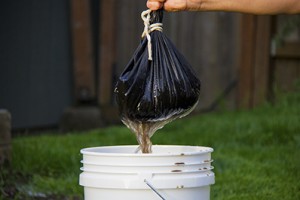
Once your tea has been brewed you should strain the particles out of the solution. For this part of the process, you’ll use your burlap sack or any type of large knit cheesecloth-like material.
Pour the mixture through the cloth into the second 5 gallon bucket. You can reuse the separated compost particles as a soil amender, or throw them into a compost pile.
Using Your Compost Tea
Now that you have successfully brewed and strained your batch of compost tea, you should be left with a particle free, amber colored liquid. If your liquid is very dark, it may be too concentrated and can be diluted by adding extra water until a lighter color is achieved.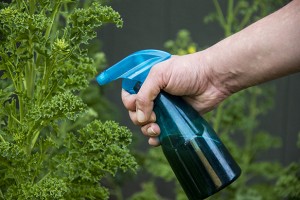
Fill your clean handheld spray bottle or garden sprayer with compost tea and water. A general guide to tea dilution is as follows:
- For house plants use a 1:1 (tea to water ratio)
- For larger areas like lawns or trees use a 1:3 (tea to water ratio)
As you begin applying your protective brew teaming with microorganisms to your plants observe the health of the plant to guide how much tea you spray. Sick plants will generally need larger amounts of tea than healthy plants.
When Should You Spray? And How Much?
Whenever you see signs of disease or undernourishment these are good indicators that your plants may need a dose of compost tea.
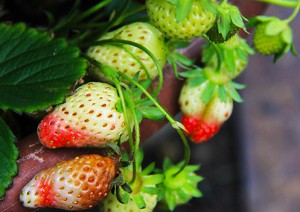 Undernourished plants may have yellowing leaves, stunted growth and smaller than normal flowers or fruits. Signs of a fungal disease include wilting foliage, failure to flower or bear fruit, and discolored leaves. Pest problems and other diseases produce many of these symptoms as well.
Undernourished plants may have yellowing leaves, stunted growth and smaller than normal flowers or fruits. Signs of a fungal disease include wilting foliage, failure to flower or bear fruit, and discolored leaves. Pest problems and other diseases produce many of these symptoms as well.
To use your compost tea, you can spray it on plant foliage (leaves), spray or soak the soil around a plant, or even treat seedlings by dipping their roots into compost tea before planting them.
Medium houseplants require about 2 cups of tea each treatment. For lawns apply tea once or twice a month during growing season, just before or just after regular watering. One gallon of compost tea mixture covers about 1,000 square feet.
If you are seeing signs of disease or undernourishment spray at least once a month, or as often as every other week. If you have healthy plants, spraying once or twice a season can still be beneficial.
Note: Do not spray your plants in direct sunlight or excessive heat. UV rays and extreme temperatures can damage your compost tea.
You may not see immediate changes in your plant health, but be patient. It takes some time for the beneficial microorganisms to grow and proliferate around and on the plant.
Storing Compost Tea
You can only keep and use compost tea for several days after decanting from the original brew.
Compost tea does not keep well for long periods of time because the living microorganisms in the solution will quickly ‘eat’ all of the available food and eventually die. By storing compost tea properly, you can help it stay ‘good’ for several days after decanting.
Store compost tea away from direct sunlight and harmful UV rays. Also, make sure to keep your tea away from extreme temperatures (between 60-90 degrees F).
Do not store your brew in a closed container. Natural biological and chemical reactions can create pressure and cause a sealed container to burst.
Cautions With Compost Tea
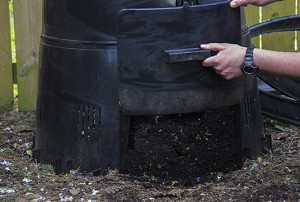 Do not apply compost tea to any vegetable within 3 weeks of the planned harvest date. Compost tea can contain some human pathogens and should not be ingested or introduced into the body.
Do not apply compost tea to any vegetable within 3 weeks of the planned harvest date. Compost tea can contain some human pathogens and should not be ingested or introduced into the body.
Also, not fully matured compost can contain E. coli. Make sure your compost is fully broken down to help ensure that no unwanted pathogens are introduced into your compost tea.
Creating quality, fully matured compost is a very complex subject that we will explore in a different post. Until then, here is a link to making quality compost.
Beautiful Blooms & Green Gardens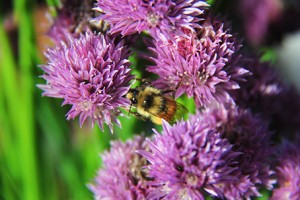
Now that you know how to brew amazing compost tea and properly spray your struggling plants, all you have left to do is sit back and enjoy the fruits of your labor.
Soon you will have jealous neighbors complimenting your gardening prowess and begging for your growing secrets.
Have you ever made compost tea before? We’d love to hear about your personal tea recipes and success stories in the comments section.
Sources:
- http://extension.oregonstate.edu/douglas/mg/dcmg/aerated-compost-tea
- http://www.bhg.com/gardening/yard/compost/gardeners-gumbo/
- http://budgeting.thenest.com/apply-compost-tea-31282.html
- http://www.finegardening.com/how-to/articles/brewing-compost-tea.aspx
- http://faq.gardenweb.com/faq/lists/organic/2002082739009975.html










